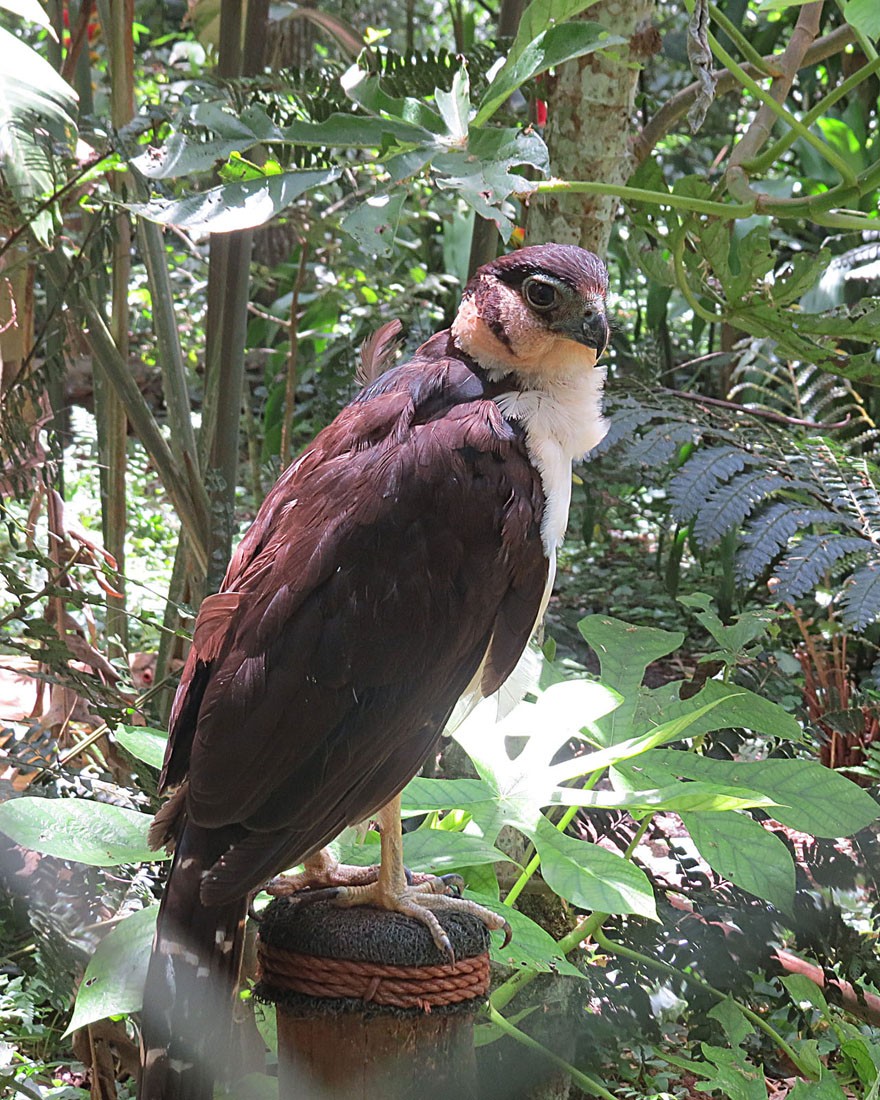Collared Forest-falcon
A species of Forest Falcons Scientific name : Micrastur semitorquatus Genus : Forest Falcons
Collared Forest-falcon, A species of Forest Falcons
Botanical name: Micrastur semitorquatus
Genus: Forest Falcons
Content
Description General Info
Description
The collared forest falcon has a dark coloured back with a white neck and breast. The species has three morphological variants (morphs): pale, tawny and dark. The former two have a light coloured collar at the back of their neck, which explains their name. Males weigh around 580 g and females around 870 g. Although its forest lifestyle, rounded short wings, long tail and lack of the characteristic beak tooth suggest affinities to hawks, there are several morphological connections to the Falconidae in which it is now placed, e.g. moult pattern and the morphology of the skull. M. semitorquatus display sexual size dimorphism, with the female being much larger than the males on many accounts such as mass, size of beak, tail and wing chord. It averages a value of 9.5 on the dimorphism index (moderately large). This value was calculated from observations done at Tikal National Park in Guatemala. Nestlings are born with a cover of natal down, white nails, light yellow legs and short, deep, laterally, yellowish white compressed beaks. Their heads are held up and eyes open after a couple days. Pupils begin with a blue back hue and black iris which turns to a more chocolate brown after four weeks. After a few weeks the young are able to defend themselves if bothered. Down feathers will be gone by the sixth week, replaced with juvenile feathers. However, fledging will occur before wing and tail feathers are completely grown. In the weeks that follow, fledglings will continue to move further from the nesting site as they grow bigger and more confident. 
Size
56 cm
Nest Placement
Cavity
Feeding Habits
Collared Forest-falcon, a raptor, preys primarily on mammals and birds, using stealth and surprise in forested habitats. Adapted for sudden strikes, collared Forest-falcon exhibits agile hunting, seizing diverse prey from rodents to smaller avians.
Habitat
Collared Forest-falcon is typically found in lowland tropical rainforests, frequenting the forest edge, and areas with dense understorey. It is also present within second-growth forests and mangroves. Across its range, collared Forest-falcon inhabits semi-deciduous and semi-evergreen forests and has been recorded at elevations up to 1950 meters. While it often occupies understorey levels, in places without competing species, collared Forest-falcon can be found from lower subcanopy to mid-canopy, primarily within lower-stature forests.
Dite type
Carnivorous
General Info
Feeding Habits
Bird food type
Distribution Area
The species is commonly found in many Central and South American countries: Argentina, Belize, Bolivia, Brazil, Colombia, Costa Rica, Ecuador, El Salvador, French Guiana, Guatemala, Guyana, Honduras, Mexico, Nicaragua, Panama, Paraguay, Peru, Suriname and Venezuela. The species is extremely widespread, with a total estimated population between 500,000 and 5 million individuals. Furthermore, they are year-round residents of their Latin American home. Due to their distinct morphology, the collared forest falcon is able to inhabit a variety of habitats from moister regions such as mangroves, tropical and rain forests to gallery forest and tall second growth. They tend to prefer regions where the undergrowth is relatively dense and where they can move and hunt more easily within it. They range from sea level to 2500 m elevation. Around ten territorial pairs are estimated to occupy a 100 km area. However, these estimates are based on radio telemetry of individuals during the breeding season and therefore they may be different in another context. 
Species Status
Currently, M. semitorquatus ranks as least concern in conservation status since it inhabits a wide variety of forest types. On the other hand, the collared forest falcon tends to select bigger, old growth trees such as the Cedrela mexicana as their nesting sites. This type of wood also happens to be preferred by the surrounding logging industries. Future research may want to look into the potential impact that logging could have on the breeding of these large birds. Modified habitats may prove unsuitable for these species to adapt. 
Scientific Classification
Phylum
Chordates Class
Birds Order
Diurnal Birds of Prey Family
Falcons and caracaras Genus
Forest Falcons Species
Collared Forest-falcon 